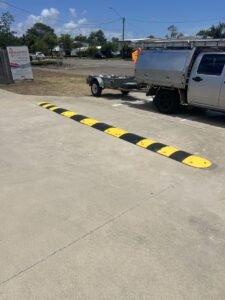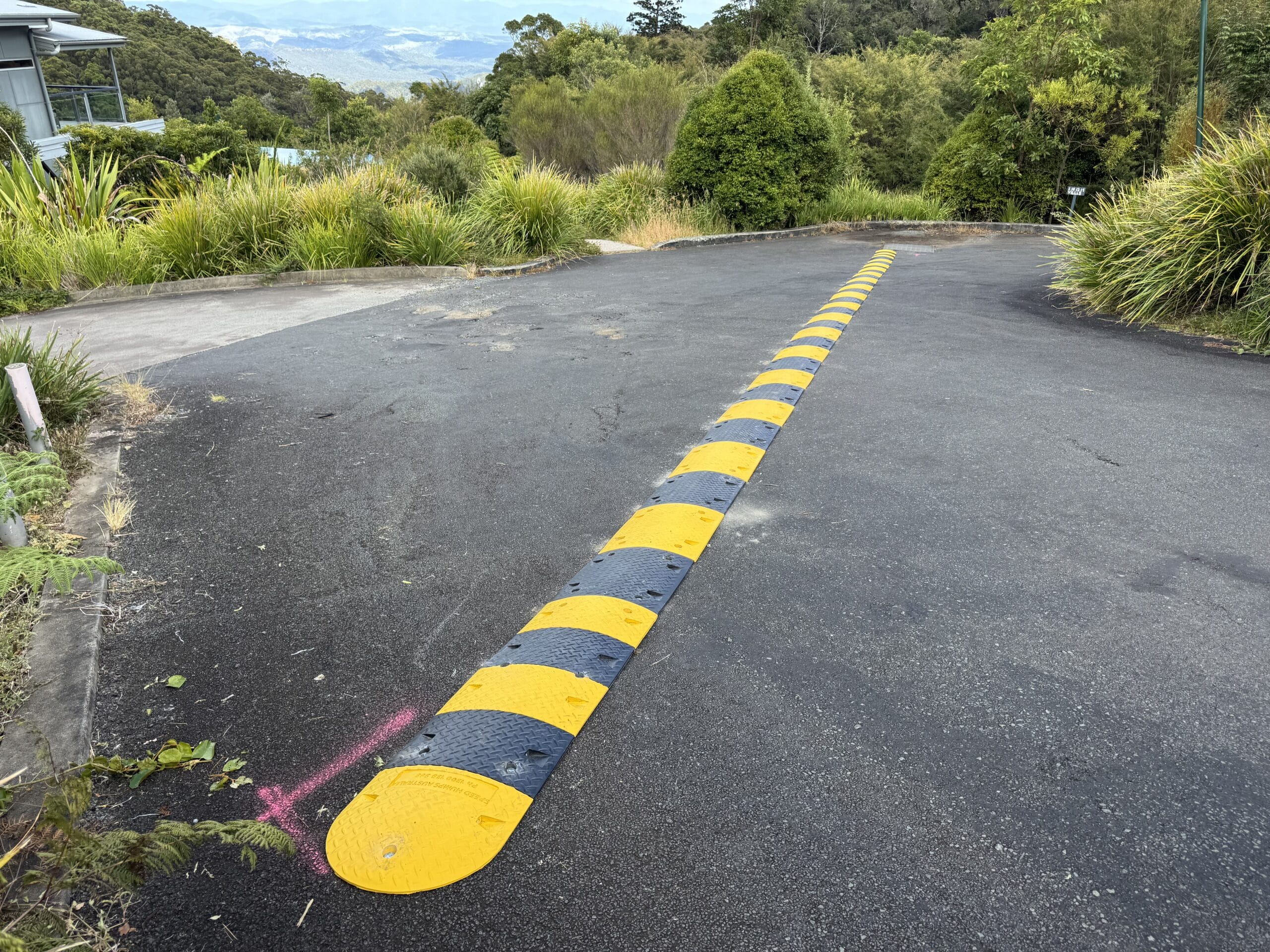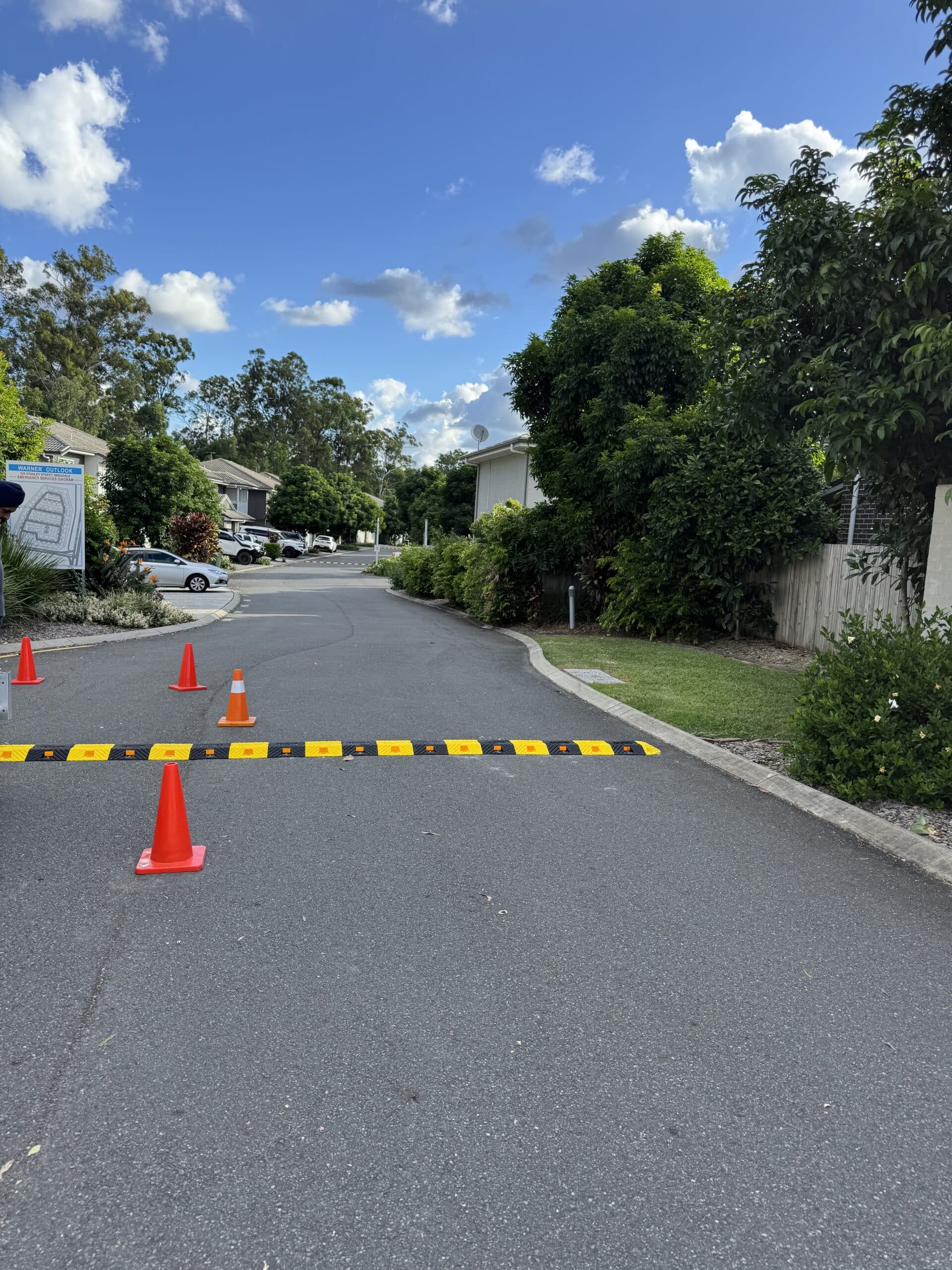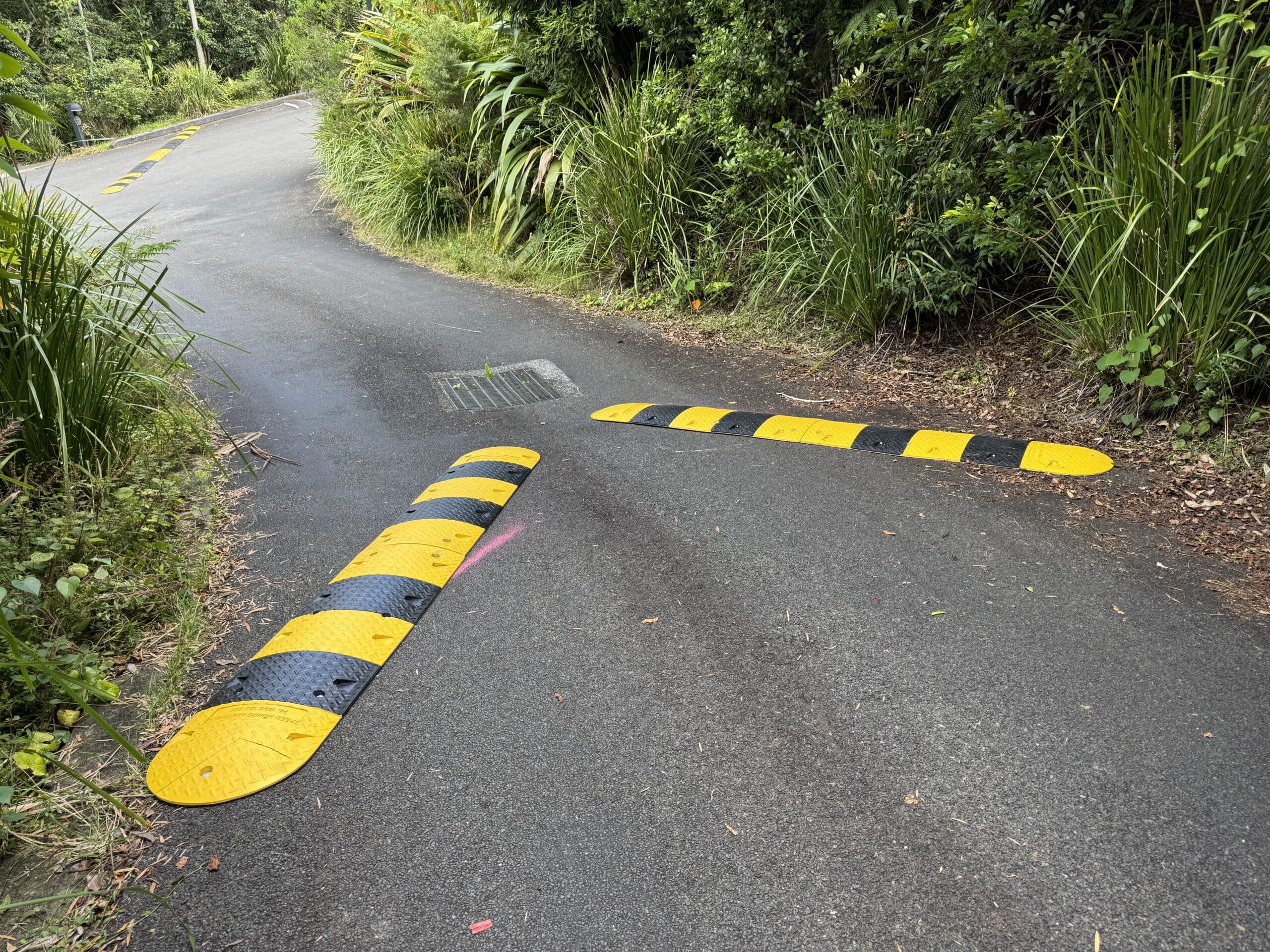

Traffic management is crucial in ensuring road safety and maintaining order in residential areas, commercial spaces, and car parks. One of the most effective ways to control vehicle speeds and enhance pedestrian safety is by installing speed humps. These traffic-calming devices slow down vehicles, reduce accidents, and improve the overall flow of traffic. However, proper installation is essential to maximise their effectiveness.
Outlined below is a step-by-step process of installing speed humps, from preparation to final inspection. Whether you’re a contractor, a property manager, or a community leader looking to improve safety, this comprehensive guide will provide all the information you need.

Before diving into the installation process, it’s essential to understand what speed humps are and how they differ from other traffic control devices. Speed humps are raised sections of the road designed to slow down vehicles to a controlled speed, usually between 15 to 20 km/h. Unlike speed bumps, which are more abrupt and intended for areas like car parking areas, speed humps provide a gradual reduction in speed over a larger surface area.
To install speed humps correctly, you will need the following tools and materials:
Choosing the right location for speed humps is crucial. They should be placed in areas with consistent traffic flow but not too close to intersections, driveways, or pedestrian crossings. To ensure effectiveness, follow these guidelines:
Once the location is finalised, clean the surface by removing dirt, debris, and loose material. A clean surface ensures that the humps adhere properly.
Use chalk or marking paint to outline where the speed humps will be placed. Ensure that the markings align with road regulations and that provide full coverage of the lane..
Step 3: Drilling and Fixing the Speed Humps
Drill holes into the road surface based on the pre-drilled holes in the hump. Ensure you have the correct depth for the fixings being used and extract all dust from the holes before inserting the fixings
Once the installation is complete, inspect the speed humps to ensure they are secure and properly aligned. Conduct a test by driving over them at different speeds to check for stability. Make necessary adjustments before opening the road to the entire traffic if needed.

Correctly installed speed humps offer numerous benefits, including:
In addition to speed humps, other traffic-calming devices can be used to enhance road safety. Rumble bars are another effective solution for alerting drivers to slow down, especially before intersections or hazardous zones. Integrating different methods can create a safer and more efficient traffic management system.
For high-quality speed humps and expert guidance on installation, look no further than Speed Humps Australia. We offer durable and practical solutions to meet various traffic control needs. Our products ensure safety and long-lasting performance.
Installing speed humps is an effective way to manage vehicle speeds and improve road safety. By following the proper installation steps, you can ensure they function correctly and last for years. Always select the right materials, prepare the site correctly, and conduct thorough testing after installation. With the right approach, speed humps can create a safer and more organised traffic environment for everyone.



For 10 years, our focus has been on one thing: to provide one style of product and to do it well.
Our wheel stops, speed humps and rumble bars meet Australian Standards, don’t fade, and we’ve never needed to replace one.

For 10 years, our focus has been on one thing: to provide one style of product and to do it well.
Our wheel stops, speed humps and rumble bars meet Australian Standards, don’t fade, and we’ve never needed to replace one.